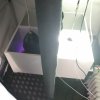Yes, these are for human application
Which are these? IRRC the lm301b/h doesn't have that "dent" @ orange...
Considering Samsung fixed some problems with 301b's ability to work in a high rH environment, I wonder if the 301b spectrum has even been developed for plant application...?
I find the lm301b-ONE of superior spectrum:
View attachment 4730622
They say it's been developed after actual tests done on leafy plants, this spectrum should allow for higher penetration, PS rates & may allow higher umols to be shot at the intial leaf, but may also loose more light to the ambient and therefore should be used in a closed reflective environment.
Maybe this is a good thing, as ß-carotene in leaves is used to dissipate excess heat away, and therefore mustn't artificially heat up by extra light.
I've addressed this further here a bit:
He just announced that he was closing down, but mass medical strains shares a similar philosophy, that there are valuable qualities in landrace sativas from back in the day that have been somewhat forgotten about in the pursuit of the denser, more convenient instagram-worthy indicas. might be...
www.rollitup.org
Yes, indeed. Also there are special IR wavelengths (IRRC @ 2500nm) which holds great health potential for humans, they do something in our skin.
Thank you, sort of a combination of Peggy Bundy & Nebula Haze. Came across that on eBay coincidentally...XD














